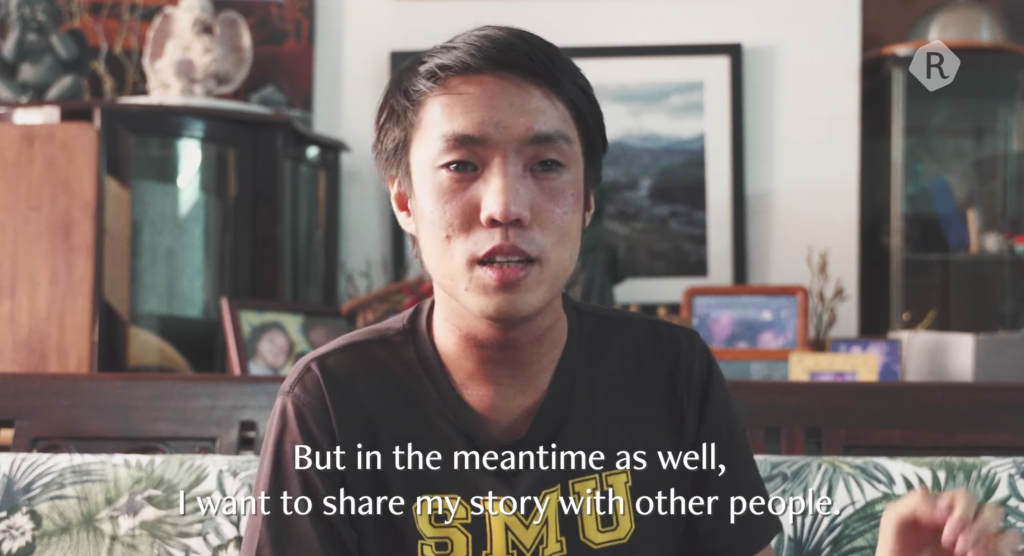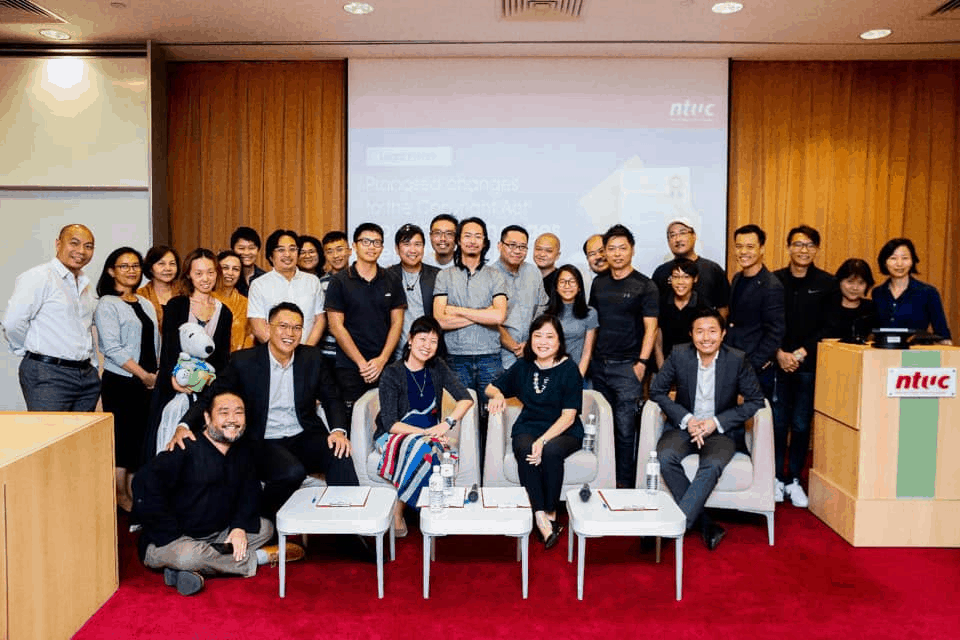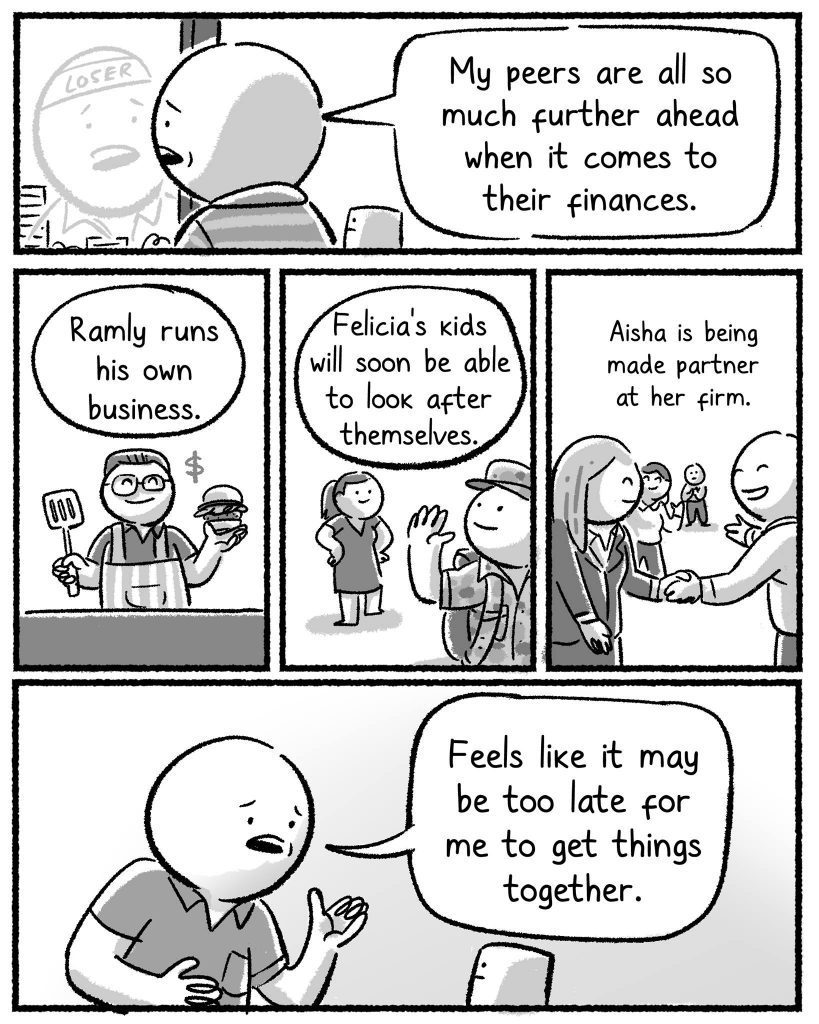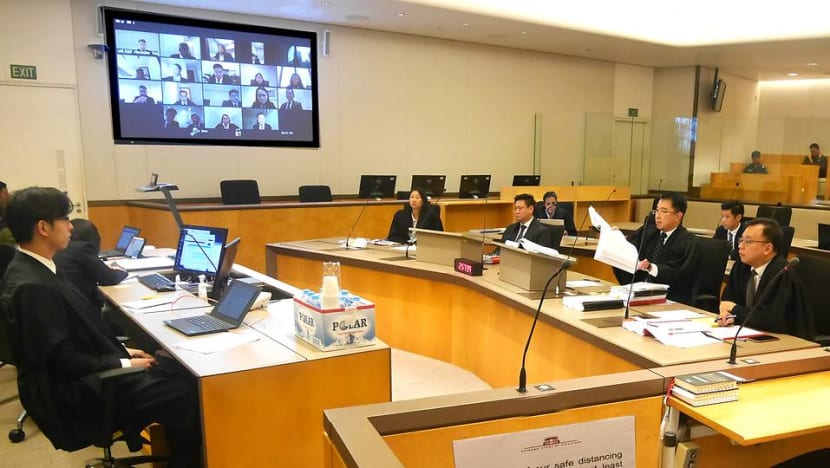Top image: RICE file photo
I recall the high-profile copyright tussle in 2015 which involved Hong Kong celebrity Rosanne Wong, over her wedding photographs. However you view it, it was unpleasant for one’s big day to be forever tainted by a lawsuit.
Now there’s less of a need for such legal wranglings. The amended Copyright Act, which came into effect on Nov 21, has been tweaked to make it less complicated, with photographers having default rights to the photos for all commissioned content.
But there are also other changes less known and less talked about, such as how the amended Copyright Act greatly benefits people who are vision-impaired.
Take 25-year-old Joshua Tseng, who currently studies in the School of Information Systems at Singapore Management University.
Completing his reading assignments used to be a guilt-ridden affair for the visually-impaired undergraduate. It wasn’t too bad when he could contact publishers to provide him with reading materials in PDF to convert it into a more accessible format.
By right, before the Copyright Act was amended recently, publishers could demand license fees from print-disabled users like Joshua, who had to convert materials into formats like Braille or audio recording.
Thankfully, the publishers knew he was vision-impaired and were kind enough to send materials over to him without charges.

The problem, however, set in when he had to read obscure papers and the publisher couldn’t be contacted for permission or had gone out of business. The copyright holder became fuzzy, Joshua said.
“It’s an unspoken thing that when you are converting to a different format, it isn’t technically legal.”
Now Joshua can heave a sigh of relief, as license fees are no longer required to be paid to publishers, who are copyright owners of the reading materials he owns. Converting reading materials into more accessible formats will no longer be an issue for him.
“Now we can do it with a clear conscience because it has always been a ‘technically you can’t do this but…’ There used to be a big question mark on how above water this is.”
Amendments five years in the making
The impetus for the amendments came in 2016 when different countries were starting to tweak their copyright laws. Technology was changing quite a lot then, and it’s possible that in other countries, the people affected felt the law was not applying to them well enough.
As such, Singapore jumped on the bandwagon, which is often the case in intellectual property, as copyright applies worldwide.
As long as the intellectual property belongs to someone from a country under the World Trade Organisation, Singapore is obliged to protect them under international treaties if an infringement happens in our country.
Staff members at the ministry and Intellectual Property Office of Singapore would read other countries’ reviews and laws and think of what goes into the public consultation.
Between 2016 and 2017, the ministry held more than 14 consultations with numerous stakeholders, including schools, writers, and musicians, in town halls, briefings, and focus group discussions.

Besides garnering feedback for the legislation, the consultation sessions—the first took place in 2016—were also meant to educate content creators on their rights. After all, many of them, such as artists and writers, didn’t understand the legalese of the Copyright Act and how infringements had affected their income.
When public consultation closed in early 2019, the ministry had received 94 formal written submissions and 283 responses through their online form.
The frustrations of the past
Every time Parliament sits and new laws are introduced or amended, there’s bound to be two opposing groups of couch commentators online. The divide is even starker after controversial debates, such as legislation over fake news or amending the elected presidency scheme.
But scrolling through social media, I realised there isn’t much commotion on the Copyright Act. If anything, Singaporeans are generally supportive of the amendments as they benefit the groups concerned, especially creative content creators.
Without sufficient recognition given to these players, the excellent work done by creatives will be undermined. It will be hard for them to continue being inspired to churn out new artwork, for example, if they gain nothing from it.
If content creators weren’t legally protected, we might not get to enjoy insightful graphics on personal finance, such as those by The Woke Salaryman, because intellectual property theft makes it almost impossible for them to source for funding or sponsorship.
One of its co-founders, Goh Wei Choon, made this point in August 2019. The 32-year-old wrote on Facebook: “It’s difficult when we see financial planners and institutions taking our work and repurposing it for their benefit, especially with a phone number or email at the end.”
We recapped the open letter he wrote when we spoke over the phone. The Woke Salaryman is enjoying immense popularity now, but when it first started, without as many followers and less recognition, the ripping of content wasn’t something Wei Choon could ignore.
“We wanted to grow our numbers. The numbers meant a great deal to us,” he told me.
“Some of them (those who ripped their content) were getting way more shares than us,” he said, adding that he intentionally refused to watermark his graphics because that would detract readers away from its narrative quality.

But Wei Choon’s concern wasn’t just about numbers or missing opportunities to monetise his content.
“Our advice is dispensed generally to the layman. To have it taken into the hands of somebody else who is selling a product and then recontextualise the information we are sharing, to sell a product we don’t mean to sell—that bothered me.”
What’s the ground response like now?
What now, then, two years after that drama—as Wei Choon termed it—and with new additions to the law?
He generally welcomes the amendments in the Copyright Act, especially the right to be identified. In the original law, no one had to give creators like Wei Choon credit when using their works. No flying flamingos given.
Legally speaking, he could only call out if his illustrations were falsely claimed to have been done by someone else. Now, anyone who uses his graphics must seek permission and credit The Woke Salaryman clearly and prominently.
His co-founder at The Woke Salaryman, He Ruiming, 32, said: “The new rules help you reduce anxiety that our content might be misused.”
But with more than 600,000 followers on Facebook and Instagram, they could say that content theft doesn’t bother them as much anymore.
The illustrations by The Woke Salaryman are now well-known and thus harder for anyone to pass off the work as their own. Gone were the days when Wei Choon had to reach out to every financial planner or salesperson who infringed on their copyright.
“Nowadays, people know it’s us; they will also understand that the information is not used first hand for the agent to sell,” Wei Choon said.
But things will be different if they rewind time to when they first started, he said.
“We will now have legislative strength because anything that we put up there belongs to us by default and by right. So if you want to repost our things, you will need to quote us.”
The real estate and financial agents who ripped off his graphics without permission cannot perform the same dance now. “We can take legislative steps to say: stop it, this is our stuff. This can happen easier now.”
Copyright law is not meant to be overbearing
This being said, Wei Choon has some reservations about the law: the enforcement. He knows from experience that clamping down on copyright infringements is a whack-a-mole game.
“Having the rules is one thing, but to enforce it is a whole other thing altogether. To do the paperwork necessary to track down all these reports of people stealing your work,” he said.
But Wei Choon is pragmatic enough to know that it’s unrealistic to expect authorities to police around and catch cases of violations.
It’s almost impossible to police online, and he said they should spend resources on moderating inappropriate content on social media instead, for example.
“The new copyright law should not try to—in a hard and objective manner—fix things like that. It should be an option for people to seek duress if something happens, but I don’t think it should be an all-encompassing thing where we can stop it (copyright infringement) from happening.”
Now that he mentioned it, the approach of this particular law feels reactive rather than preventive. Like Wei Choon, I’m doubtful how it will be enforced.
What if I take The Woke Salaryman’s graphics and pass them off as my own? I’m a nobody, and most likely, I will get away with it.
After doing my own research, I learnt that there are different categories of laws—civil, administrative, and criminal.
For crimes, such as hitting someone publicly or outrage of modesty, they belong to criminal law, which authorities control. But the Copyright Act falls under civil law.
Thus, if someone infringes copyright, it’s up to the person who holds the copyright to go after that guy. Unlike murder or rape cases, people aren’t physically harmed by copyright breaches.
It is clear that the ministry is trying to protect incomes but not to the extent that they have to control every facet of it. There’s a balance here they were trying to strike.
To put it colloquially, illegal doesn’t always mean police.
To sue or not to sue
Unlike the Americans, we are not a litigious group of people. Only when push comes to shove would we take a dispute to the courts. There’s a deeply-entrenched impression among Singaporeans that court cases are draggy and expensive, and many would try to avoid the legal route as far as possible.
Also, let’s not forget that taking problems to the courts means a risk of getting unnecessary publicity in the press by reporters who cover court proceedings. Not the best deal for a face-saving society.
During the debate over the Copyright Act, MP for Nee Soon GRC Louis Ng brought up precisely this point about legal costs.

Even though the Law Ministry had reassured Singaporeans that the court process would be made simpler and cheaper for copyright tussles sometime next year, the creatives I spoke to still don’t think going to the courts is the best way forward.
For Wei Choon, most of the battles he sees nowadays are fought on social media. Instead of going through the legal route, some took things into their own hands online by calling out companies who didn’t respect copyright rules.
I turned to another creative, 25-year-old Ian Hamdan, who is also not very keen on getting bogged down by lawsuits by taking copyright violators to court—at least for now—if someone steals his work.
“If I am selling a Picasso-esque kind of work, then yes, but I don’t think I would be quick to put someone in court or sue somebody for heavily referencing my work because I don’t think the work that I do is necessarily worth it to sue somebody,” the motion graphics designer said.
This is despite him, like Wei Choon, getting his artwork stolen before—by a fellow creative, no less, which made Ian feel disheartened. To better appreciate the updates to the law and their impacts, I got Ian to share his experiences from the past when his body of work was stolen.
His ideas and style may not be necessarily new in his line of work and are also challenging to create. Even for him, he gets inspired by what he sees online, on Pinterest, for example.
“But there’s a way to adapt whatever you have referenced to something completely fresh, ” Ian said, citing the use of different shapes, textures, and brush strokes.
“I have a certain style, and I have people heavily referencing the way I do it. At first, I got irate because it’s a style I’ve been trying to develop for a while; it’s something that came very distinctively to me and innate to me as a designer.”

The artist who copied Ian’s work was someone he had worked with before, and it was clear that the colours, compositions, and textures she used imitated his work.
Precisely because they are both well-acquainted, it made it all the more disappointing for Ian.
“I have a high expectation of my peers to pave their own way and hone their craft, so when I see them referring to my work or any designer’s work that I know, I feel it’s a missed opportunity for them to develop their visual language,” he said.
But no, Ian doesn’t intend to make things uglier and bring violations like this to court. To him, legal recourse isn’t a tool he would immediately turn to unless he has no choice.
Fortunately, the Law Ministry has probably anticipated Singaporeans’ general aversion to taking problems to court. As mentioned in the same parliamentary debate, there are other means to resolve copyright tussles without suing each other.
Mediation is one of the ways, but affected people like Wei Choon and Ian could also turn to the legal clinics organised by IPOS, where lawyers would advise them on their situation and the following steps to take, with costs fully reimbursable by IPOS. For instance, the lawyer might suggest having a letter sent to an infringer to stop the illegal act.
What does this mean for the man on the street?
At the end of it, where copyright is concerned, I feel that the Law Ministry doesn’t intend to throw the book at anyone whenever they have the chance to do so.
It may sound cliche, but public education is still how the ministry hopes to improve the situation amidst the changes in technology and the appearance of different content mediums.
From the ministry’s publicity efforts, they are trying to encourage people to put themselves in other people’s shoes. A lot of these works will not exist if they are not given support, respect, and recognition.
All the content that’s created by someone—someone who is passionate about their comics, about their artwork—they need to get income to continue doing these.
I cast my mind back to June last year when there was a huge kerfuffle over a Sunday Times report, which cited that 71 per cent of respondents thought of artists as a non-essential job in the context of a post-Covid-19 world.
The survey was based on 1,000 respondents, conducted by online market research firm Milieu Insight. There was an outcry because it appeared that people were demanding service while simultaneously degrading it.
In the same light, there has been insufficient recognition given to these creatives, as their works have been undermined by the public for a long time when they’re not given the credit they deserve.
The amended Copyright Act is timely to protect creators and their creative efforts, especially since online gate-keeping has been weak.
After all, this law first existed in the 1980s when the online world didn’t exist. It’s only timely for the Law Ministry to update the rules to ensure copyrights for creative works are still respected even online and not carte blanche for everyone simply because there isn’t any legal enforcement.
While changes in this law help to protect incomes, they can also signify that society should be valuing creative work more seriously than before and legitimise creative content.
We can only blame ourselves if one day, without adequate legal protection, creatives stop churning out wholesome content for us to enjoy. Society will have more to lose as a whole.






